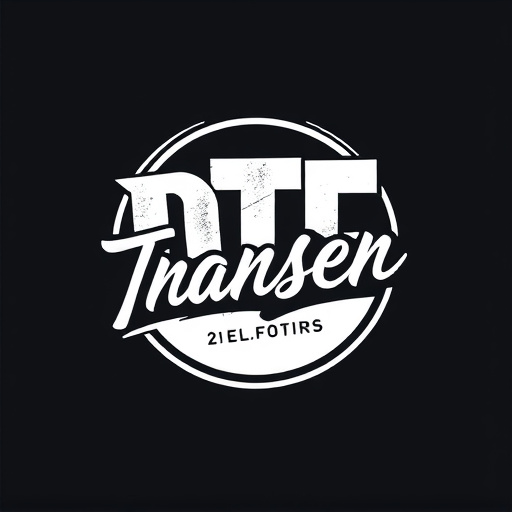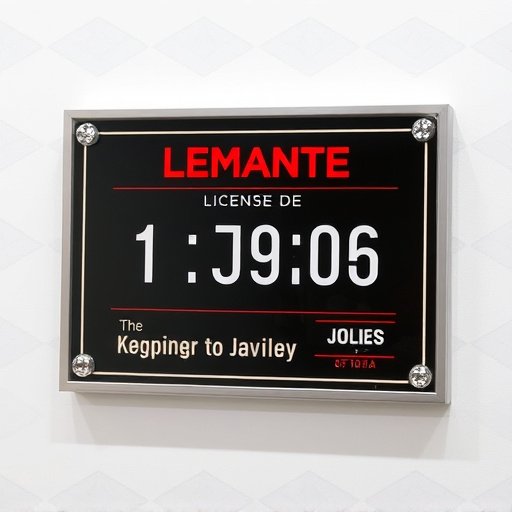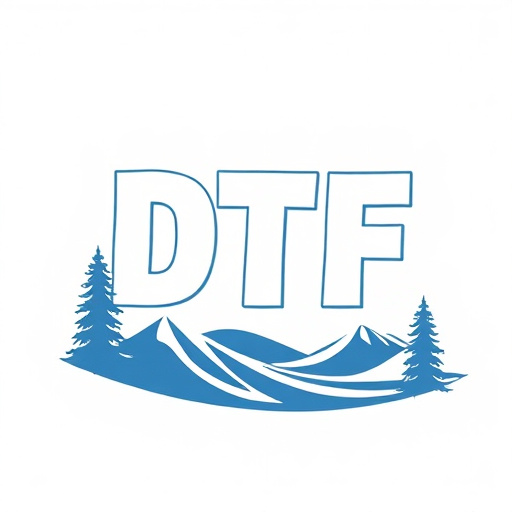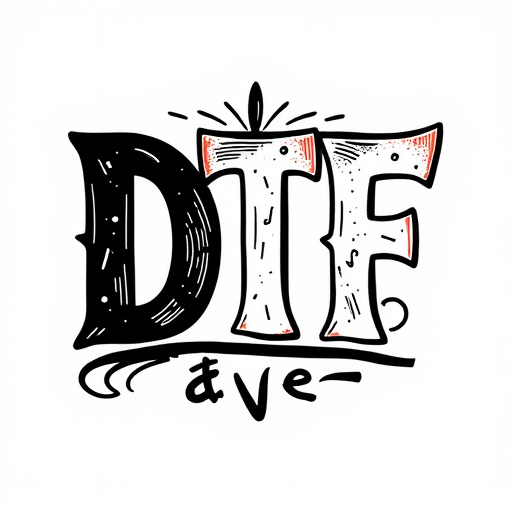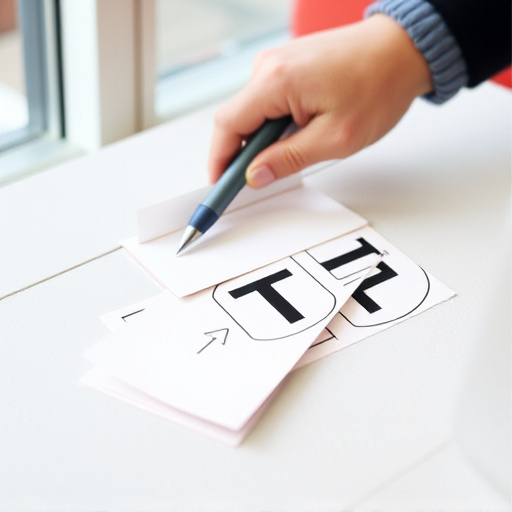Direct to Fabric (DTF) Transfers are a leading printing method for commercial applications, offering durable and versatile prints on various fabrics. DTF Printing produces high-quality, vibrant designs that resist wear and multiple washes, ideal for branding and merchandise. Choosing the right DTF transfer method involves considering fabric type, design complexity, size, budget, and ink types to ensure exceptional durability. DTF Transfers excel in retail environments, exhibit halls, window displays, and signage, maintaining visual appeal despite heavy use and varying weather conditions. Best practices for longevity include using high-quality materials, expert application techniques, proper post-application care, optimizing inks and fabrics, and applying protective coatings.
In the realm of commercial printing, DTF (Direct-to-Film) Transfers stand out as a game-changer. This technology offers extended durability and exceptional versatility, transforming various applications, from clothing to signage. This article provides a comprehensive guide to DTF Transfers, exploring their advantages, selection tips, printing process, and real-world use cases. Learn how DTF Printing enhances longevity and why these transfers are becoming the go-to choice for businesses seeking durable, high-quality prints.
- Understanding DTF Transfers: A Comprehensive Overview
- Advantages of Using DTF Transfers in Commercial Settings
- Choosing the Right DTF for Your Application: Factors to Consider
- The Printing Process: From Design to Final DTF Print
- Applications and Use Cases: Where DTF Transfers Shine
- Ensuring Durability: Best Practices for Longevity
Understanding DTF Transfers: A Comprehensive Overview

DTF (Direct to Fabric) Transfers have gained significant traction in commercial applications due to their exceptional durability and versatility. This printing method involves applying a heat-sensitive material directly onto fabric, allowing for intricate designs and vibrant colours that withstand rigorous washing and wear. DTF Transfers offer a cost-effective solution for businesses seeking to create long-lasting, high-quality prints on various fabrics, from t-shirts and hoodies to flags and banners.
DTF Printing provides an advanced way to achieve detailed and visually appealing fabric designs. The heat process activates the pigment within the transfer paper, resulting in permanent bonding to the fabric surface. This technique ensures that DTF Prints remain vibrant and intact even after multiple laundries, making them ideal for promotional products, apparel branding, and custom merchandise. Understanding the nuances of DTF Transfers is key to leveraging their extended durability for commercial purposes, ensuring business assets stand out while maintaining superior quality.
Advantages of Using DTF Transfers in Commercial Settings

Using DTF Transfers in commercial applications offers numerous advantages that enhance efficiency and quality. These transfers, created through DTF Printing techniques, boast extended durability compared to traditional printing methods. This means they withstand heavy use, frequent handling, and exposure to various environments, ensuring their longevity and reducing replacement costs over time.
Moreover, DTF Transfers provide consistent, high-quality prints that remain crisp and vibrant even after prolonged use. Their versatility allows for easy customization and application on a wide range of surfaces, making them suitable for diverse commercial needs. From signage and display materials to promotional items and apparel, DTF Transfers offer a reliable solution for creating impactful, long-lasting visual representations.
Choosing the Right DTF for Your Application: Factors to Consider
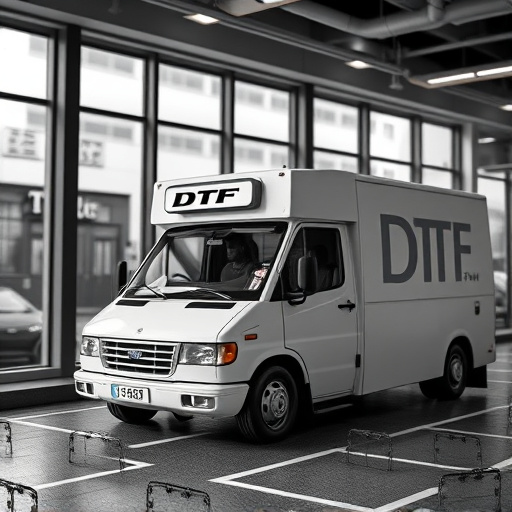
Choosing the right Direct to Fabric (DTF) transfer for your commercial application involves considering several key factors. First and foremost, understand your fabric type: different materials like cotton, polyester, or nylon require specific DTF printing techniques and inks to achieve optimal durability and colorfastness. The intended use of the final product is another critical consideration; whether it’s apparel, signage, or home decor will dictate the necessary wash fastness, UV resistance, and overall performance standards.
Additionally, print complexity and design size play a role in selecting the appropriate DTF method. For intricate designs with fine details, advanced DTF printing technologies offering higher resolution might be more suitable. Lastly, consider your budget; various DTF transfer options differ in cost due to varying ink types, drying times, and equipment requirements. Balancing these factors ensures you pick a DTF solution that delivers both exceptional results and long-lasting durability for your specific commercial needs.
The Printing Process: From Design to Final DTF Print

The journey of a DTF (Direct to Fabric) transfer begins with a designer’s creative process. They craft a unique design using specialized software, ensuring it adheres to the fabric’s characteristics and requirements for the final print. This digital design is then prepared for the printing stage, where precision and accuracy are paramount. The DTF transfer printing method involves transferring ink directly onto the fabric surface, creating vibrant and durable DTF prints.
In the actual printing process, the designed image is mirrored to align perfectly with the fabric during application. High-quality printers use advanced techniques to lay down the ink precisely, ensuring even coverage and color accuracy. The final DTF transfer is a precise reproduction of the original design, ready to be applied to various fabric types for commercial purposes. This meticulous process guarantees that each print maintains its integrity, resulting in long-lasting, high-quality DTF prints.
Applications and Use Cases: Where DTF Transfers Shine

In the realm of commercial applications, DTF Transfers stand out for their extended durability and versatility. These transfers, also known as DTF Printing, are particularly valued in industries where longevity and resilience of designs are paramount. From bustling retail environments to exhibit halls, DTF prints offer a cost-effective solution that can withstand heavy foot traffic and frequent handling without compromising visual appeal.
Whether it’s branding merchandise, creating eye-catching window displays, or designing long-lasting signage, DTF Transfers provide a reliable and durable option. Their robust nature ensures that colors remain vibrant and designs intact even under intense UV exposure and varying weather conditions. This makes them ideal for both indoor and outdoor use cases, maximizing their application potential in commercial settings.
Ensuring Durability: Best Practices for Longevity

Ensuring the durability of transfers for commercial applications is paramount to achieving long-lasting results with DTF (Direct to Fabric) Transfers and Printing. Best practices include using high-quality materials designed specifically for extended use, adhering to recommended application techniques, and providing adequate care post-application.
Choosing durable inks and fabrics optimized for outdoor exposure or heavy-use environments is fundamental. Proper preparation of the substrate, including cleaning and roughening surfaces, enhances adhesion and prevents premature wear. Expert application techniques, like precise registration and even pressure distribution, minimize air bubbles and ensure consistent contact between the transfer and fabric. Post-application, protective coatings or sealing can further shield DTF prints from fading, cracking, or peeling due to environmental factors or frequent handling.


